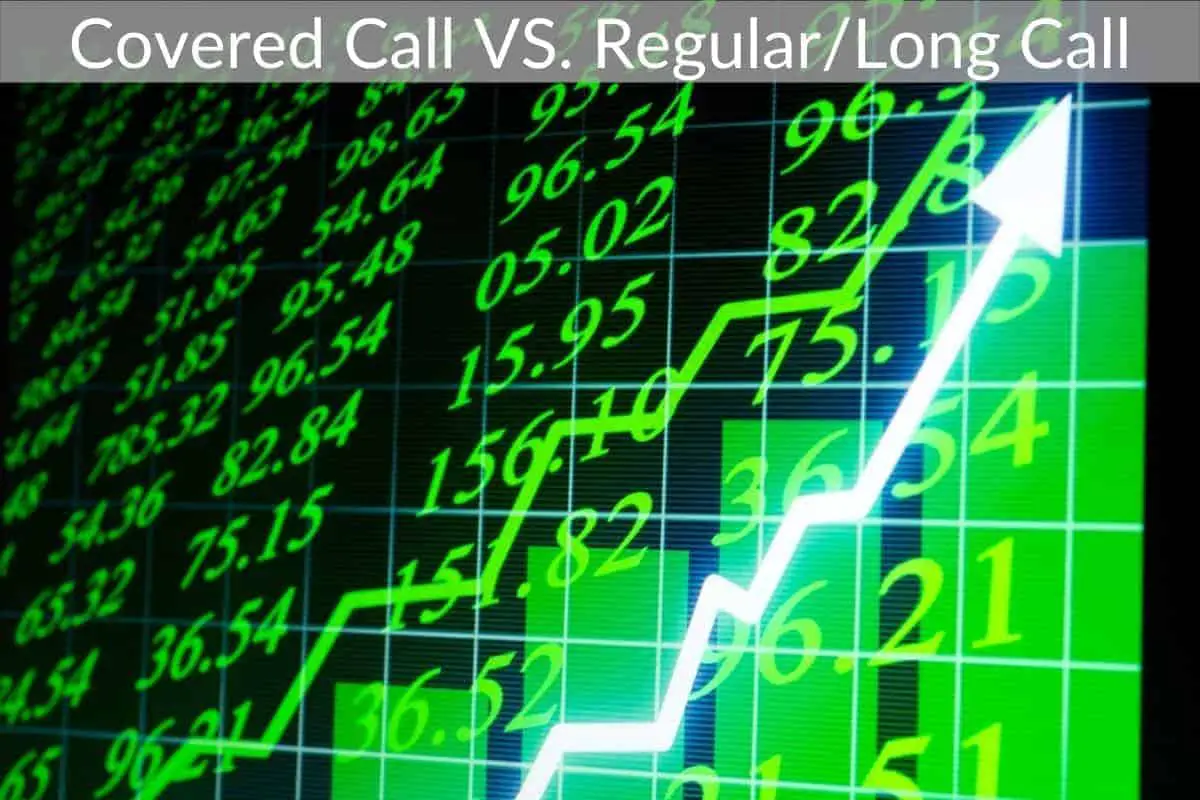Table of Contents
*This post may contain affiliate links. As an Amazon Associate we earn from qualifying purchases.
When it comes to stocks or investments of any kind, it’s vital that you know what you’re doing, and your options surrounding your investments.
For example, you should know the differences and similarities between a covered call, and long call.
Covered calls and long/regular calls are both trading strategies that can even be used by the same investors but they are used at different times.
A covered call helps generate income for an investor while providing downside protection. A regular call, also known as a naked call, is where the investor buys the call as they expect the stock price to go up prior to the expiration.
Both a covered call and a regular (or long) call can be used in different scenarios.
If you believe the stock price will appreciate quickly because of some news then you will want to buy a normal call option. However if you believe the stock will stay relatively flat or slightly up or down then selling a covered call against it can bring you income when the stock price barely moves.
In this article I will talk more about the differences between the covered call and long call options so that you have a better understanding of how this system works.
Covered Call VS. Long Call
To really understand the differences between both of these options, you first need to understand what they are. There are some differences between the two but they’re both very similar.
Let’s go through these below.
What Is a Covered Call?
Covered calls are call options where the investor actually owns the stock or asset they are selling the call against. This type of option may be a good strategy if the investor believes that the stock price might not fluctuate much within a relatively short period of time.
Covered calls are created when an investor holds a stock and then writes call options on the same stock for the same amount of shares as their underlying position.
As an owner of futures or stock shares, the investor has the ability to buy or sell at any time for the market price of the asset. When a covered call is written, the owner sells their right to trade the asset to another investor for money (or the premium).
This means the buyer would be granted your right to purchase your security within a certain period of time at the strike price.
What Is a Long Call?
A long call is a typical options trading strategy an investor might use if they believe the stock price is expected to rise within a certain period. This allows the investor the right to buy the stock at the strike price if they choose to do so.
The investor buying into the asset using a long call option wants the cost of the stock to rise beyond the strike price before its expiration date so they can make a profit.
The value of the call option increases as the stock price climbs.
There is limited risk involved with this strategy as the maximum loss would be the premium paid by the investor. There is a potentially unlimited profit potential when using the long call options strategy.
Risks and Rewards With Long Calls and Covered Calls
- Unlimited profit potential may be gained by purchasing a long call option if the asset’s value rises beyond the strike price and the maximum loss is only the premium paid for the option.
- The maximum loss associated with a covered call option is much larger and is dependent on how much the price of the assets falls (if it does).
- Potential profit associated with covered call options is the strike price of the call minus the stock price plus the premium the investor has received for selling the option.
Pros and Cons of Long Calls
The benefits of buying a long call option instead of the underlying asset is that it makes it possible for the investor to attain profits while investing less money and keeping losses to a minimum.
The disadvantage of long calls is that they have a limit to how long they can exist. If the price does not exceed the strike price before they expire, the option will become worthless, and the premium paid for the option will be lost.
Pros and Cons of Covered Calls
The advantage of covered calls is that they allow the investor to generate income from the asset they hold as the stock price minimally falls or rises if the asset’s value moves sideways or doesn’t move up or down very much.
The disadvantage of a covered call is that there is limited reward potential with more risk involved since the stock price could drop and you are holding the shares.
How Far Out Should You Sell a Covered Call Option?
Your best judgment should always be used, but most investors are looking for a date that gives them a reasonable premium for selling their call at the strike price they have chosen.
So, 30 to 45 days out should be an acceptable place to start. Some investors believe that 2% of the value of the stock is acceptable.
Selling In-the-Money Covered Calls
If the investor is looking for consistency and moderation in their rate of return, in-the-money calls are an excellent strategy to use.
The profit of this type of option is limited to the premium earned, but there is more protection offered on the downside.
Selling Deep-In-The-Money Covered Calls
Deep in-the-money calls are covered call options where the strike price is much less than the current stock price.
Let’s say you, the investor, have recently had a big run up on a stock, and you wish to protect your recent gains. If you believe that your asset is due to pull back some, but you still would like to hold the stock, you can sell a deep-in-the-money call against it.
Once the pullback happens, you can then repurchase the option that you sold, protecting yourself from a potential riser of the stock.
If the stock doesn’t drop however you will have your shares called away from you on or before the expiration.
What Is an Out-of-the-Money Option?
A call option is considered out-of-the-money when the strike price is higher than the underlying asset’s market price. The investor will then have the right to buy an underlying asset for more than the market price of the stock, which carries no benefit except potential profit.
These types of options grow in value rapidly when a stock rallies to or above its strike. This must happen in order for the investor to gain a profit.
Out-of-the-money options are the cheapest to buy in terms of absolute dollars.
Although they are cheaper than buying the stock outright, there is always an increased risk of losing the upfront premium. When out-of-the-money options are appropriately executed, there is a good potential for big profits, but cheaper does not always mean better.
There is usually a reason things are cheap.
While buying out-of-the-money options possess the allure of high potential profitability, other strategies for high profitability should be evaluated.
Conclusion
When dealing with any investing, it’s essential that you know what you’re doing and what your rights are. This allows you to invest while being mindful of the risk.
Knowing the difference between these two option trading strategies will make investing a whole lot easier for you.

